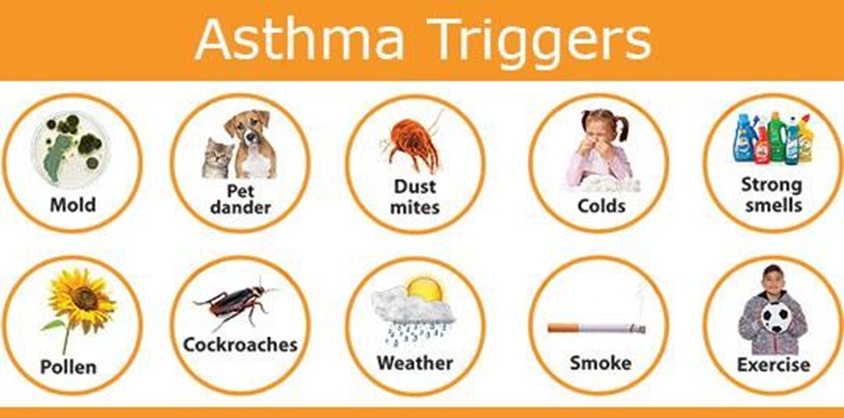After change of shift, the nurse has the following patients on her assignment. Which one should she see first?
A 50-year-old with COPD and a Spo2 of 90%
A 72-year-old with pneumonia who needs his antibiotic
A 37-year-old with asthma who reported that he is still having shortness of breath after using his inhaler
A68-year-old on a CPAP who needs a sputum specimen sent to the lab
The Correct Answer is C
C. Persistent shortness of breath after using an inhaler could indicate an inadequate response to treatment or worsening asthma exacerbation. The nurse should therefore see this patient first.
A. In COPD patients pulse oximetry oxygen saturations of more than 90% are acceptable. In the treatment of exacerbations of chronic obstructive pulmonary disease (COPD), oxygen should be titrated to achieve a target oxygen saturation range of 88-92%. This results in a greater than twofold reduction in mortality, compared with the routine administration of high-concentration oxygen therapy.
B. Administering antibiotics can be prioritized, but it may not require immediate attention compared to addressing acute respiratory distress or hypoxemia.
D. Collecting a sputum specimen for laboratory analysis is important for diagnosing and managing respiratory infections, but it may not be as time-sensitive as addressing acute respiratory distress or hypoxemia.
Nursing Test Bank
Naxlex Comprehensive Predictor Exams
Related Questions
Correct Answer is ["B","C","D","E"]
Explanation
B. Beta-blocking medications, such as propranolol and metoprolol, can worsen asthma symptoms in some individuals by constricting the airways. Patients with asthma should avoid or use caution with beta-blockers, especially non-selective ones, as they can trigger or exacerbate asthma attacks.
C. Exposure to secondhand smoke is a well-established trigger for asthma symptoms and can exacerbate respiratory inflammation and airway hyperresponsiveness. Patients with asthma should avoid exposure to secondhand smoke whenever possible to reduce the risk of asthma exacerbations.
D. Carpeting and drapes can harbor dust mites, pet dander, and other allergens that can trigger asthma symptoms in susceptible individuals. Patients with asthma may benefit from removing carpeting and minimizing soft furnishings in the bedroom to reduce exposure to allergens and improve air quality.
E. Pets, particularly those with fur or feathers, can be potent allergens for individuals with asthma. Patients with asthma should consider removing pets from the home or at least keeping them out of the bedroom to minimize exposure to pet dander.
A. Cardiovascular exercise can trigger asthma symptoms in some individuals but it is not typically recommended to eliminate exercise altogether. Instead, patients with asthma should be encouraged to engage in physical activities that are well-tolerated and to use appropriate preventive measures, such as pre-exercise bronchodilator therapy and warm-up exercises, to minimize symptoms.

Correct Answer is ["B","D","E"]
Explanation
B. Bronchodilators are medications commonly used to relieve bronchospasm and improve airflow in patients with COPD. They work by relaxing the muscles around the airways, making it easier to breathe. Providing bronchodilators as prescribed can help alleviate difficulty breathing and improve the patient's respiratory function.
D. Smoking cessation is essential for patients with COPD as smoking is the leading cause of the disease and can exacerbate respiratory symptoms. Quitting smoking can slow the progression of COPD, reduce the frequency and severity of exacerbations, and improve overall lung function.
E. Corticosteroids are anti-inflammatory medications commonly used to reduce airway inflammation and control exacerbations in patients with COPD. They can help improve breathing and reduce the severity of respiratory symptoms during acute exacerbations.
A. Offering small frequent meals can help reduce the sensation of fullness and bloating, which can sometimes occur in patients with COPD due to increased abdominal pressure from compromised respiratory function. However, this is not specific to COPD.
C. Weaning from oxygen should be done cautiously and under the guidance of healthcare providers but not in the state of difficulty in breathing. Oxygen therapy is often necessary for patients with COPD who experience difficulty breathing, especially during acute exacerbations. Therefore, weaning from oxygen may be appropriate once the patient's respiratory status stabilizes and oxygen saturation levels improve.
Whether you are a student looking to ace your exams or a practicing nurse seeking to enhance your expertise , our nursing education contents will empower you with the confidence and competence to make a difference in the lives of patients and become a respected leader in the healthcare field.
Visit Naxlex, invest in your future and unlock endless possibilities with our unparalleled nursing education contents today
Report Wrong Answer on the Current Question
Do you disagree with the answer? If yes, what is your expected answer? Explain.
Kindly be descriptive with the issue you are facing.
